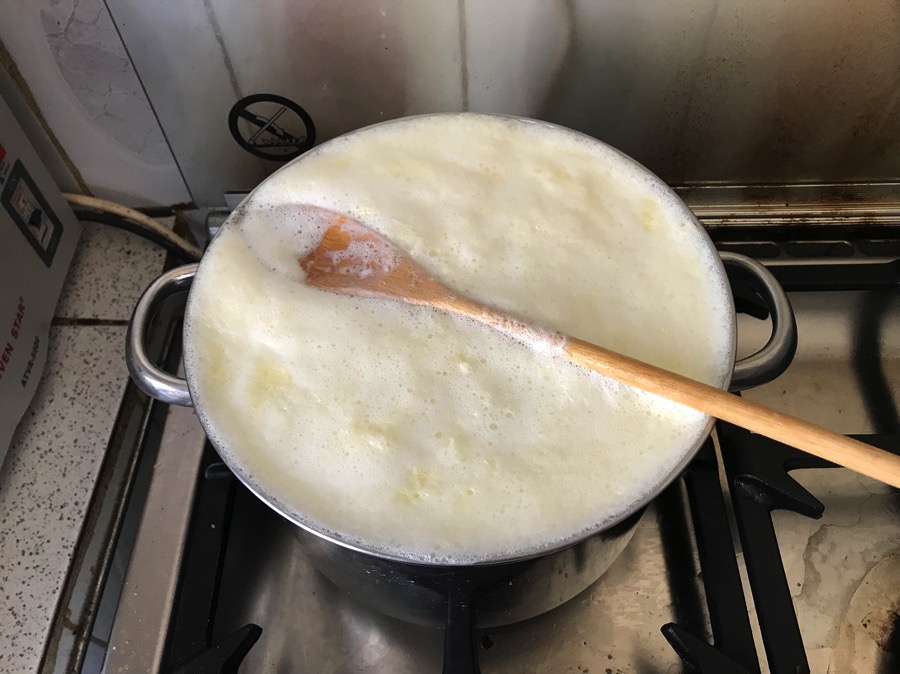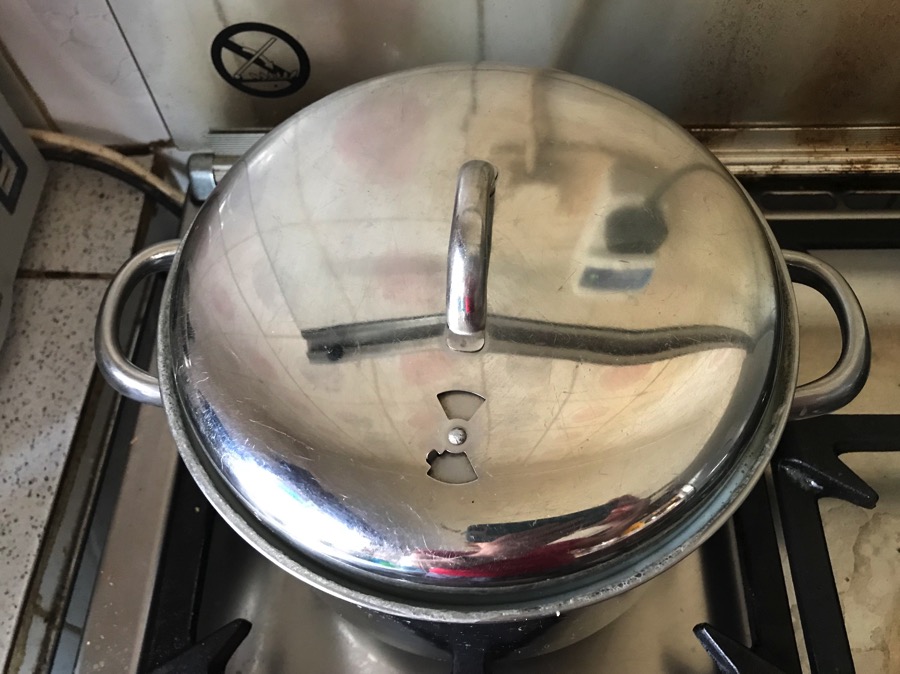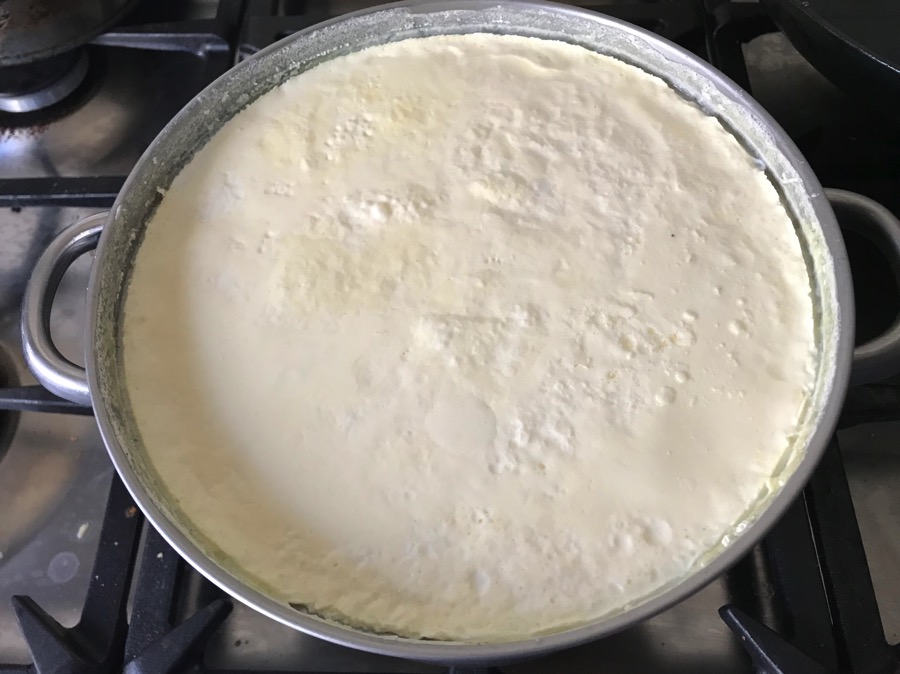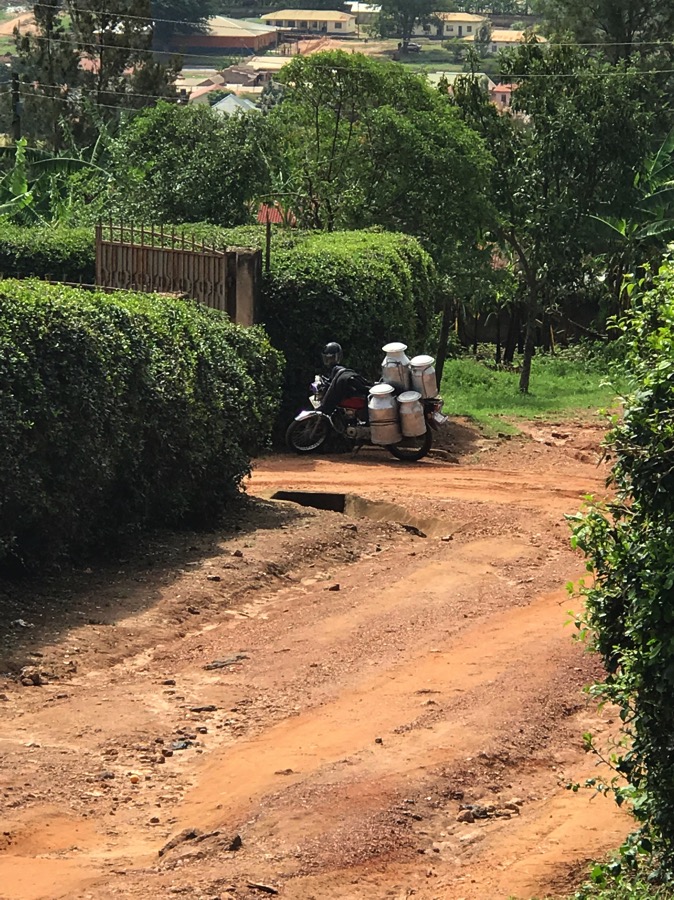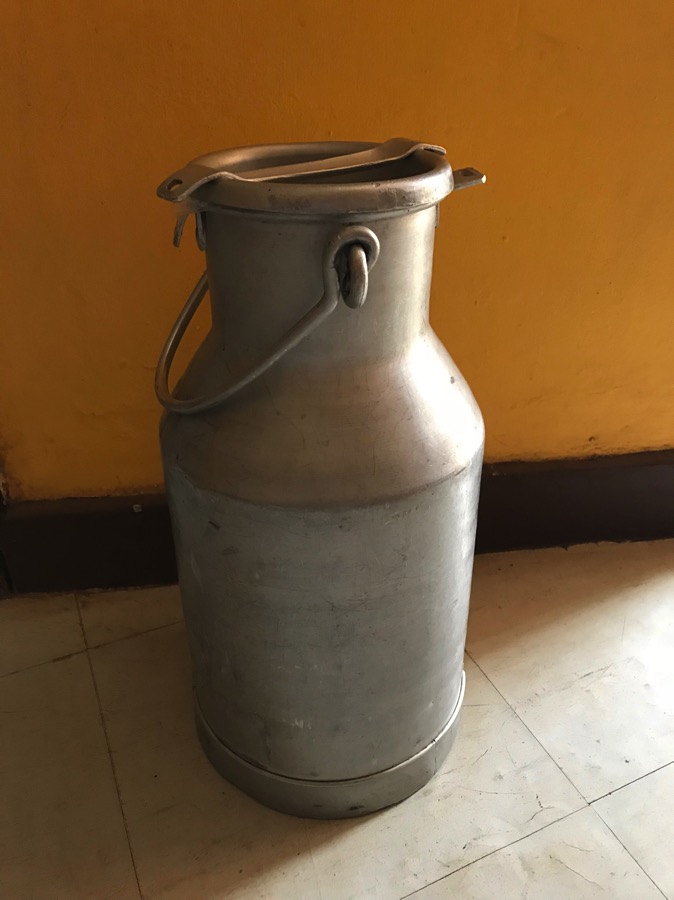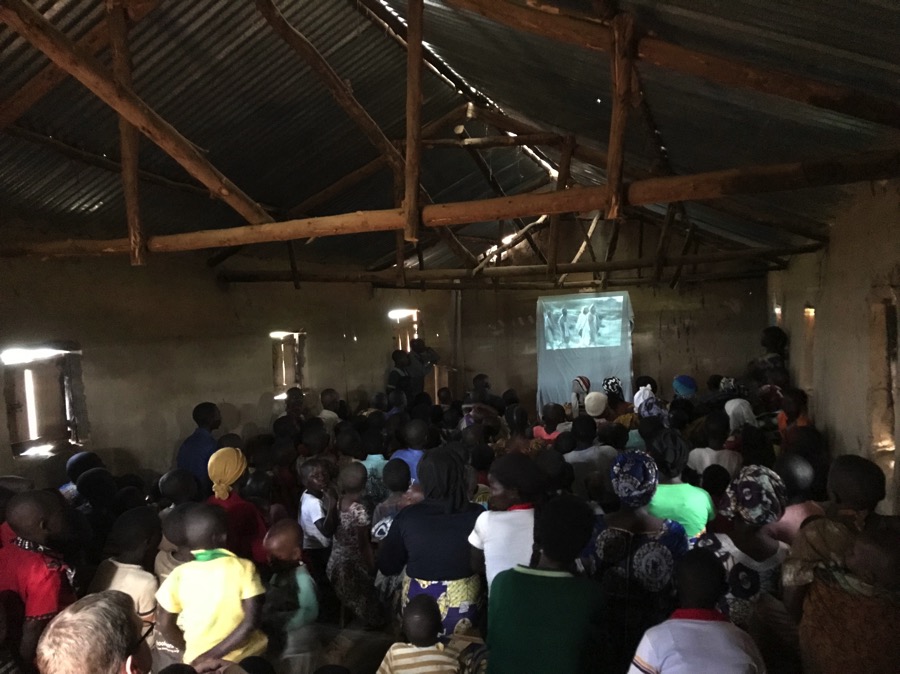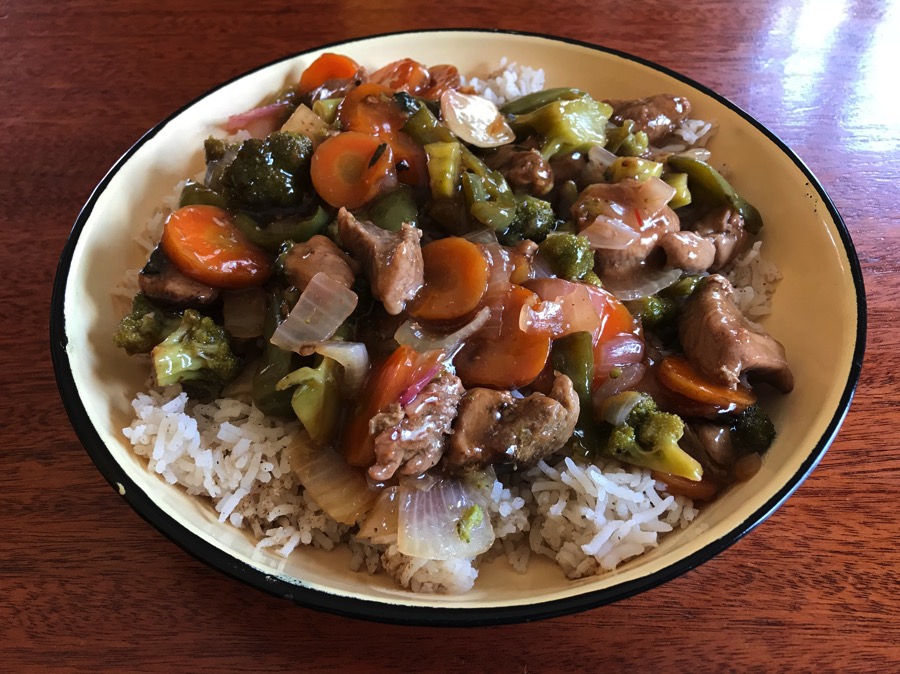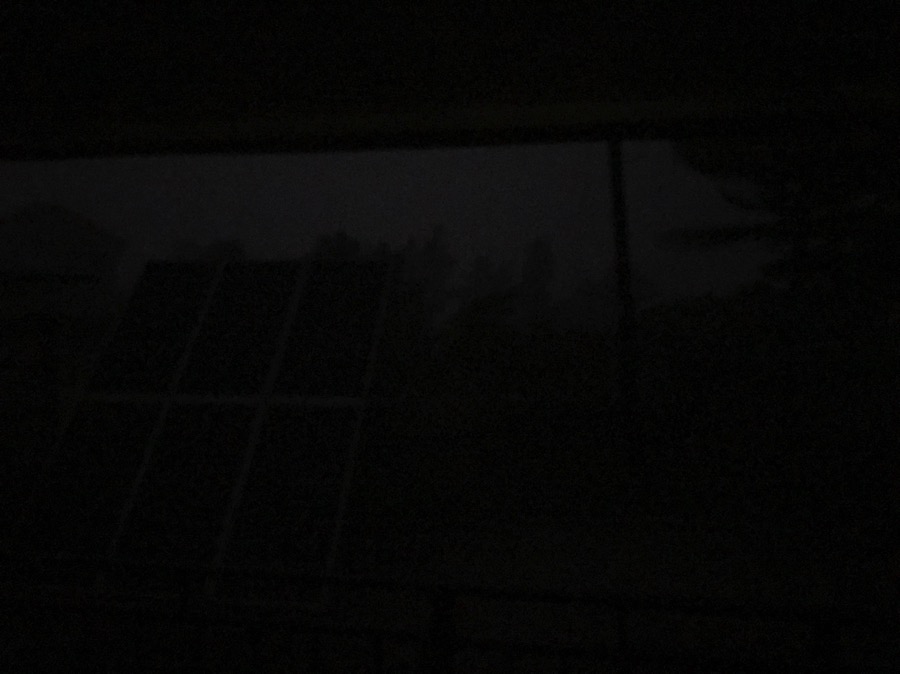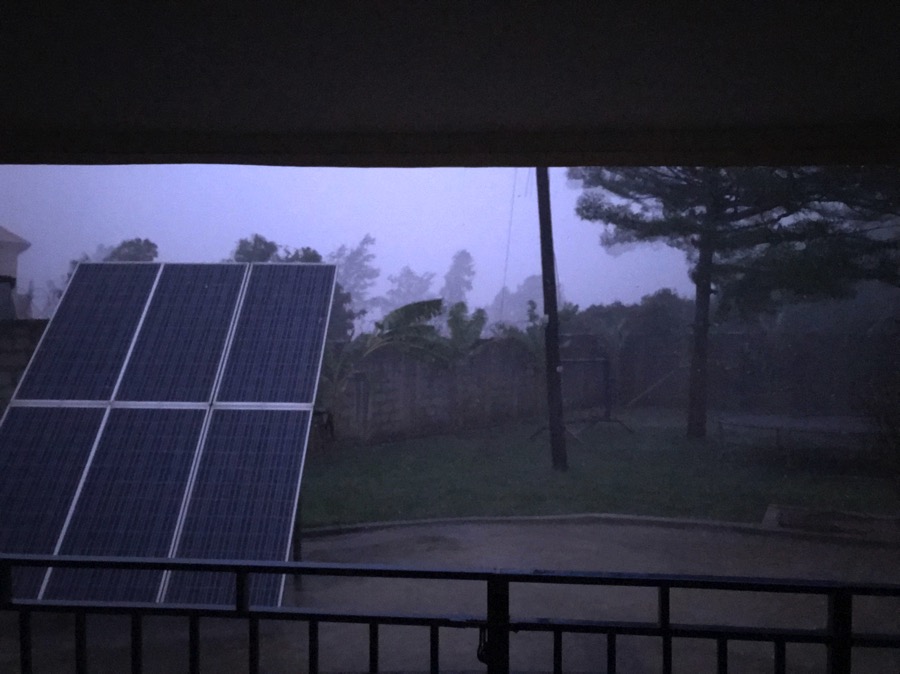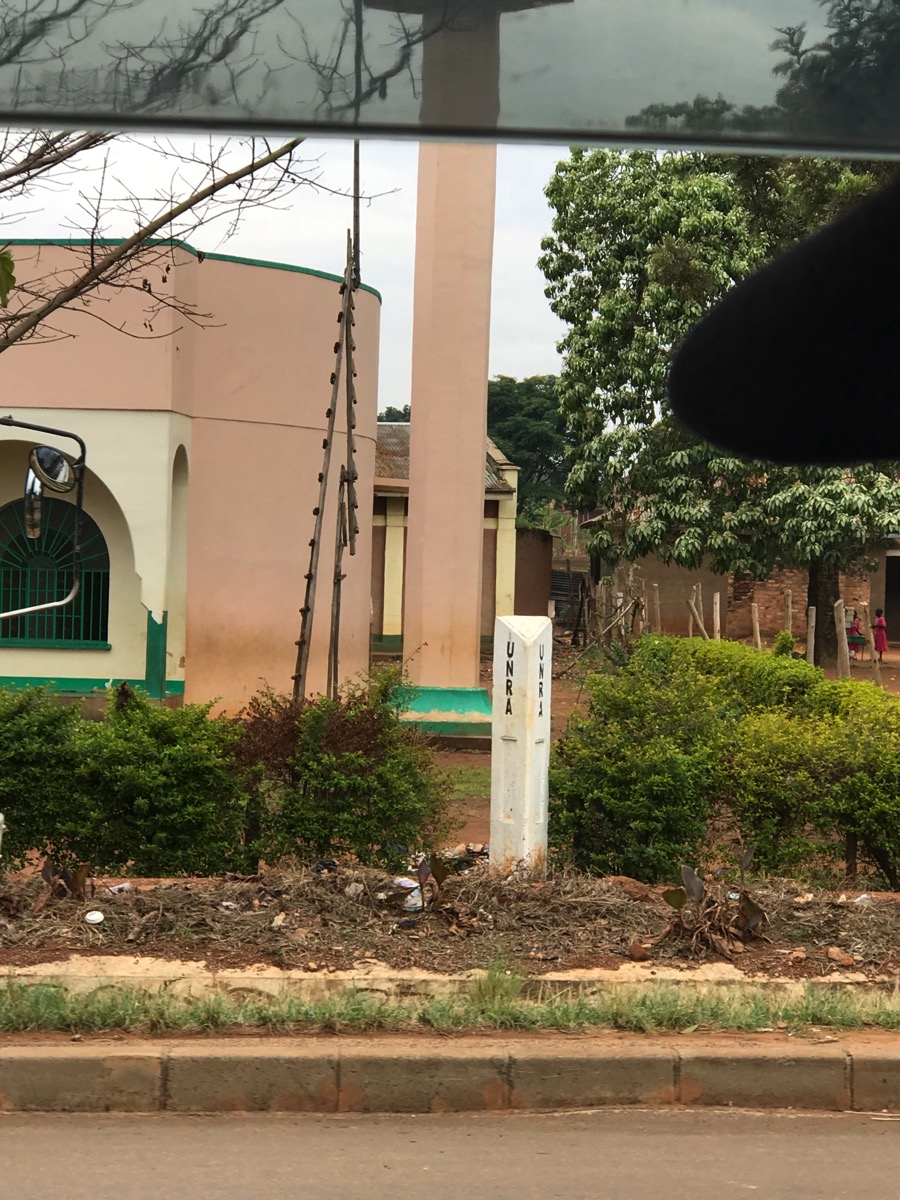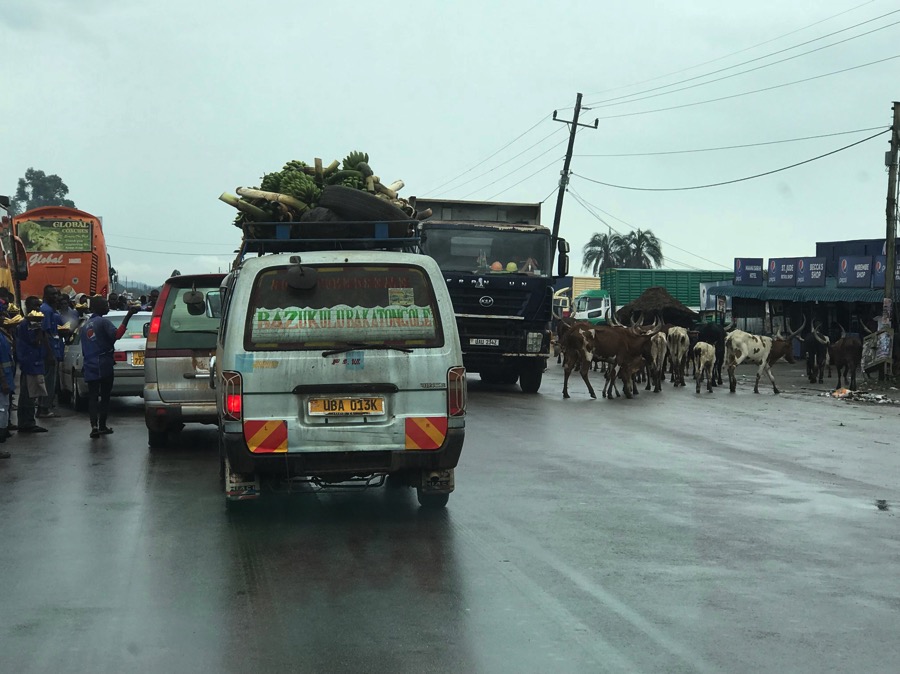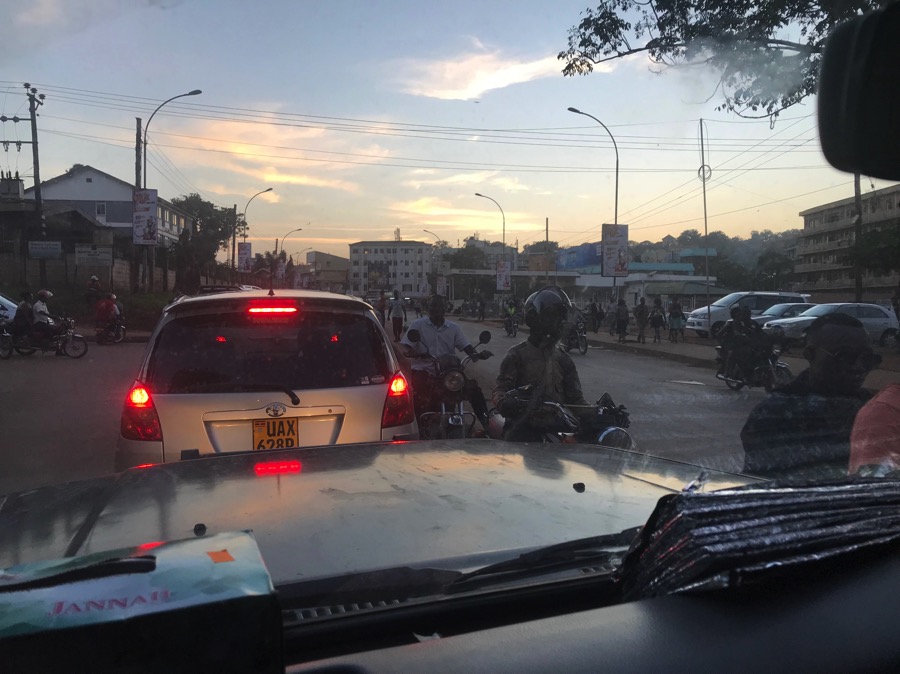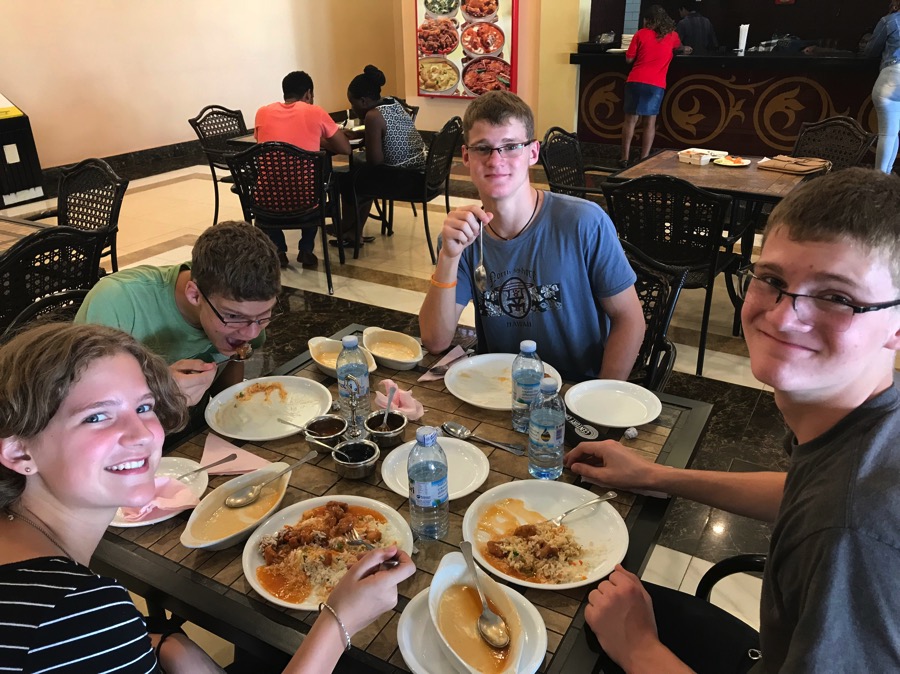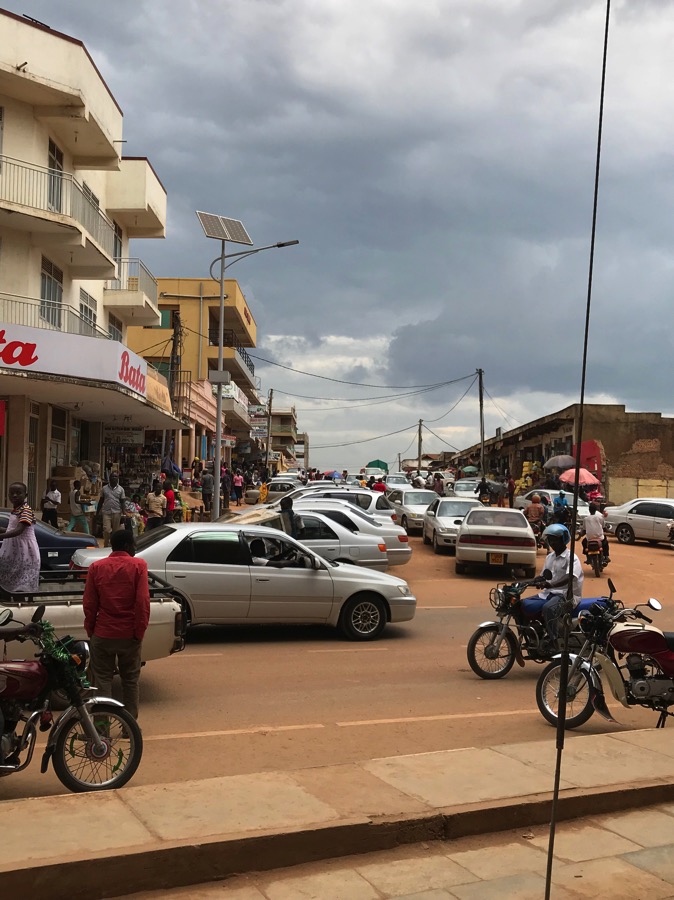
A few days ago James happened across an article that shared a number of things you can’t do in Uganda. The author had followed up a few days later with another list of things he’d missed the first time.
It could be the “can’t do” list is regional, because, as James and I talked, we disagreed with some of them. For instance, bodas frequently park in car parking spots in our town. In fact, they will fill every available parking space and leave no room for other vehicles.
Don’t get me wrong, Uganda is quite the libertarian state — in some respects. In others, you’d better tow the line.
We’ve seen:
- 10+ people crowded into a 4 door sedan that shouldn’t seat more than 5 or 6.
- Women holding their baby on their lap while they ride in the front seat of said sedan.
- Women riding “side saddle” on a boda (motorcycle taxi) with a tiny baby tied on her back, suspended over nothing but air.
- “Scaffolding” next to a 4 story building made of nothing but poles nailed to each other until they are tall enough, with boards balanced on top for the workers to stand on.
- Marijuana growing by the side of the road.
- Huge bonfires started, well, pretty much anywhere something needed to be burned.
- A herd of cows grazing in the local golf course green.
- Any number of livestock kept in and around a person’s property (including but not limited to: cows, goats, sheep, ducks, chickens, and turkeys).
- No permit needed for any modification to property. If you want to change your house or property, hire the workers, buy the supplies, and do it.
- Bars next door to schools and in residential areas. (We had to move houses because a bar opened across the road from us.)
- People, both men and women, urinating by the side of the road.
- Trash – like whole bags of it – thrown out along all the roadways because there are no littering laws or fines.
You don’t need a license to drive a car or motorcycle.
You don’t need a permit to carry a gun if you are a security guard. Once, while on a run, a security guard on a boda went past. The boda driver lost control of his bike and laid it down in the road. The guard, carrying an AK-47, tumbled into the road and the gun fell apart, but didn’t discharge. (Thank God!)
We made our own list, and, while we borrowed from the other one, we included several of our own things in the list.
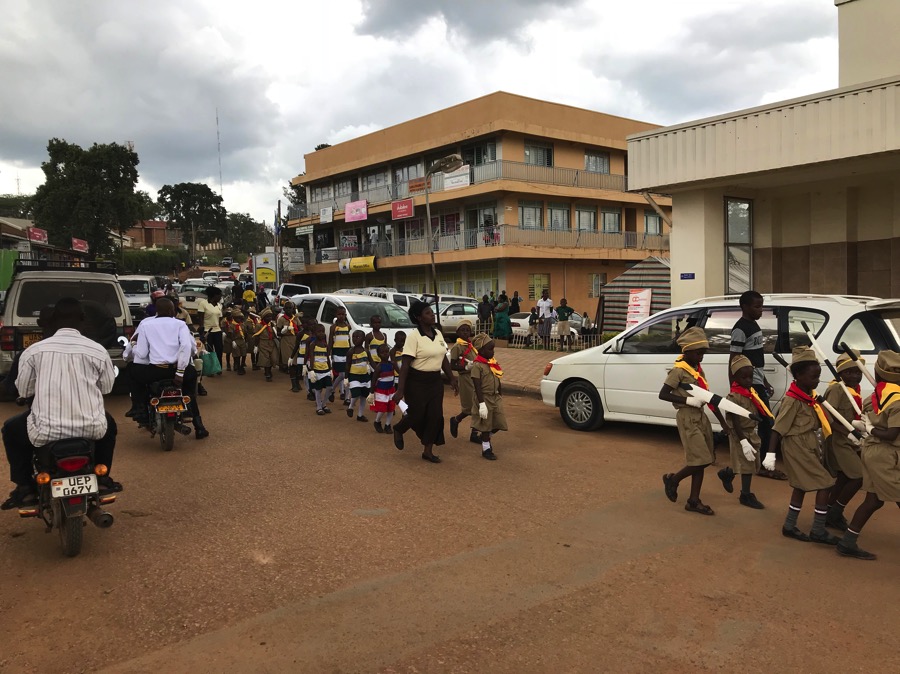
1. Carry things not in a bag
I can’t even tell you the number of times I’ve gotten funny looks because I told the clerk I didn’t want a bag or that I would put the (small) item in my purse. Once, I bought an irregularly shaped, large item. Before giving me my balance, the clerk got up and left, then returned with an overlarge bag into which she struggled to put the item. I stopped her and told her I could carry it out to the car. She gave me a funny look and kept putting it in the bag. I let her. The thing must be put in a bag.
Every now and then, Uganda will ban plastic shopping bags. The ban never sticks. I personally think it’s because people feel they haven’t shopped if they don’t have their item in a bag. (We’ve invested in reusable cloth grocery bags and I use them for almost all my shopping. The shopkeepers in the stores we frequent have learned to expect me to hand them my own bag.)
2. Go anywhere in the rain
No one goes anywhere when it rains in Uganda. I used to think this was weird. Then I tried to go somewhere in the rain. Truth is, when I left home it wasn’t raining. I’d told James I’d meet him in town after he finished an errand in the car. I no sooner reached town than the heavens opened. That’s when I realized why no one goes anywhere in the rain.
First of all, all the bodas in the country must be made of sugar, because their owners park them up on the pedestrian sidewalk under the awnings and out of the rain. Which means none of the pedestrians can walk under the awnings. Which then means that said pedestrian must walk out in the downpour while the boda drivers laugh at them for doing it. Yeah…
Next, the roads turn into a river, making them completely impassible. Dirt roads become slick, muddy swamps and are treacherous to navigate.
We’ve learned not to go anywhere in the rain and not to expect anyone else to, either. The first time someone asked me to go somewhere when it was raining in the US, I was horrified. “But it’s raining!” I said. “Yeah. So?” they replied. “But you don’t go anywhere in the rain!” I caught myself before I said that and realized I’d adapted to at least that part of the culture here in Uganda.
3. Eat or drink while walking
You can’t imagine the looks you’ll get if you carry, say, a travel coffee mug, or a bottle of water (not in a bag) while walking places. People look at you like you have two heads or an extra arm. Why would you ever want something to drink while moving around?
A good friend who used to live here regularly came to my house carrying a mug of coffee with her. We’d laugh together at the funny looks she got.
Drinking (or eating) should be done inside or while sitting. You carry that food or drink with you to your destination in a bag. That’s just the way it is.
4. Be poor and steal
A couple weeks ago, we were at the Wednesday Rwebikoona market shopping for produce. Out of the crowd, we heard cries of “thief! thief!” A knot of people ran toward us. Some of the men carried poles as tall as I am and as thick as my arm, with which they flogged a man in the center of the knot. Others slapped the man, open palmed, and beat him about the head with their fists.
He’d stolen a small beaded purse.
This isn’t the only time we’ve seen this happen. I saw something similar happen in another market and still another time on the road outside our house.
But, while these people were nearly beaten to death for stealing something small, the executives of the local power company stole so much money that the company almost went out of business. Three chain grocery stores have closed here in Uganda because their executives took all the profits and didn’t pay their bills. The telecom in our country is in bankruptcy for the same reason.
Where are these rich thieves? Living it up with their stolen goods in another country.
So, the only time thievery matters is if you are poor and get caught doing it.
5. Talk about money
Ugandans don’t talk about money. They will hedge on the price of things or make their way around asking for fair wages. They will employ any and all methods of diversion to avoid stating an amount. A Ugandan will blush, refuse to meet your eye, and sometimes get up and leave rather than coming out and stating what they want. As an American of German heritage, this feels like deception to me. I feel like they are trying to fleece me out of money. I prefer open, honest negotiation and I’m pretty good at it, too.
We’ve managed to learn ways to talk about money with people like employees and our landlord. Marketing is easier because the vendors want your money. But if you’re buying a large item from a shop in town, the shopkeeper will try to make the hard sell before telling you the price. The best way to respond when they inform you of the doubled price and try to make it sound like a bargain is to laugh. Hard. And walk away. They usually come down to something more reasonable once they figure out you aren’t a newbie to the whole negotiation process.
6. Wear ugly shoes
I love shoes. I’m the first to admit it. But I also like practical shoes, shoes appropriate for the situation. Before we came to Uganda, I got a nice pair of hiking shoes, thinking they’d be perfect for navigating the rough dirt roads common to our area. One day, it had rained all morning and I needed to go to town that afternoon. The roads were still muddy so I decided to wear my hiking shoes.
I kid you not, total strangers stopped me to tell me I should not have worn those shoes. More than one of them.
I didn’t wear them to town again, but one day decided to wear them to the market, again after a rain. Again, total strangers told me I shouldn’t have worn the shoes.
I’ve managed to find a happy medium. I try to find shoes with cute tops and sturdy soles. No more comments from strangers.
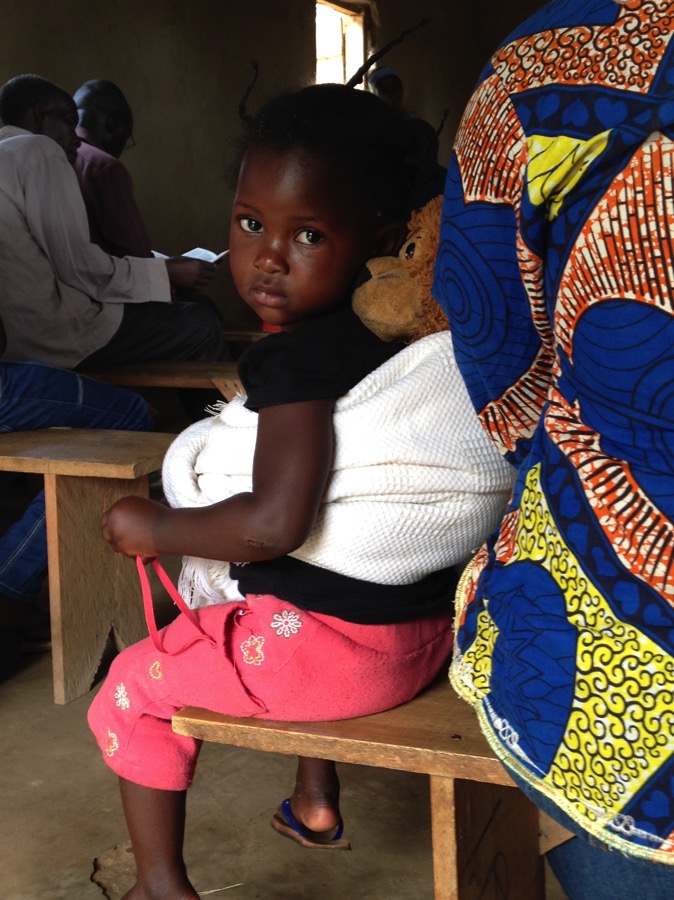
7. Carry a baby in a carrier on the front of your body
The women here wear their babies tied to their backs. Even tiny girls learn how to carry siblings this way. I’ve always thought it looked uncomfortable. I invested in a sling carrier for my youngest baby, born here about a year after we arrived. Every time I carried her to town that way, someone stopped me and told me I was breaking her back and that I shouldn’t do it that way.
(They also frequently told me when she was hungry, and that she was cold because she only had on a jacket, not layer upon layer of warm clothing and thick blankets.)
8. Be Gay
Uganda has some of the strictest laws against homosexuality that I’ve ever heard of anywhere. I’m thankful for the stand that this country has taken, even against other countries trying to force them to change.
That said, this law can come across as hypocritical. Prostitution, fornication, and adultery are rampant. Girls are not allowed to say “no” to men who demand sexual favors. Men, even supposed men of God, have “side dishes,” or women with whom they commit adultery. Women, even church women, will earn extra money on the side by gratifying men. The only time it ever becomes a problem is if the offenders are caught in the act.
In their defense, the government has done a widespread abstinence campaign. I’m not sure how well it has worked thus far, though they are reporting their AIDS cases having decreased significantly in the last few years.
9. Confront anyone about anything
Ugandans do NOT like confrontation. If you want to confront a Ugandan about anything, you have to talk to other people first and hope the problem gets back to them so they know you have a problem. If you force them to sit down and talk about the problem, they will talk about a multitude of other problems they have first before talking about the issue at hand. It makes dealing with interpersonal relationship conflicts both challenging and time consuming and sometimes you don’t even know if the problem was solved.
When confronted, they will sulk, deny the problem, avoid eye contact, change the subject, accuse someone else of something to deflect the focus off the problem at hand. Worst case, they will get up and leave in anger.
Americans, especially Christians, generally don’t deal with things this way. We face problems head on. We prefer to go to the person with whom we have a problem and talk to them directly. This preference does not play nice with the general culture here on problem solving and interpersonal relationship conflict.
I’m sure there are things I’m missing here, too. Maybe I’ll have to revisit this issue at some point in the future. But I hope this gives you another small glimpse into life here. If there is something you want to know, feel free to leave a comment or contact me with the question and I’d be happy to try to answer!
